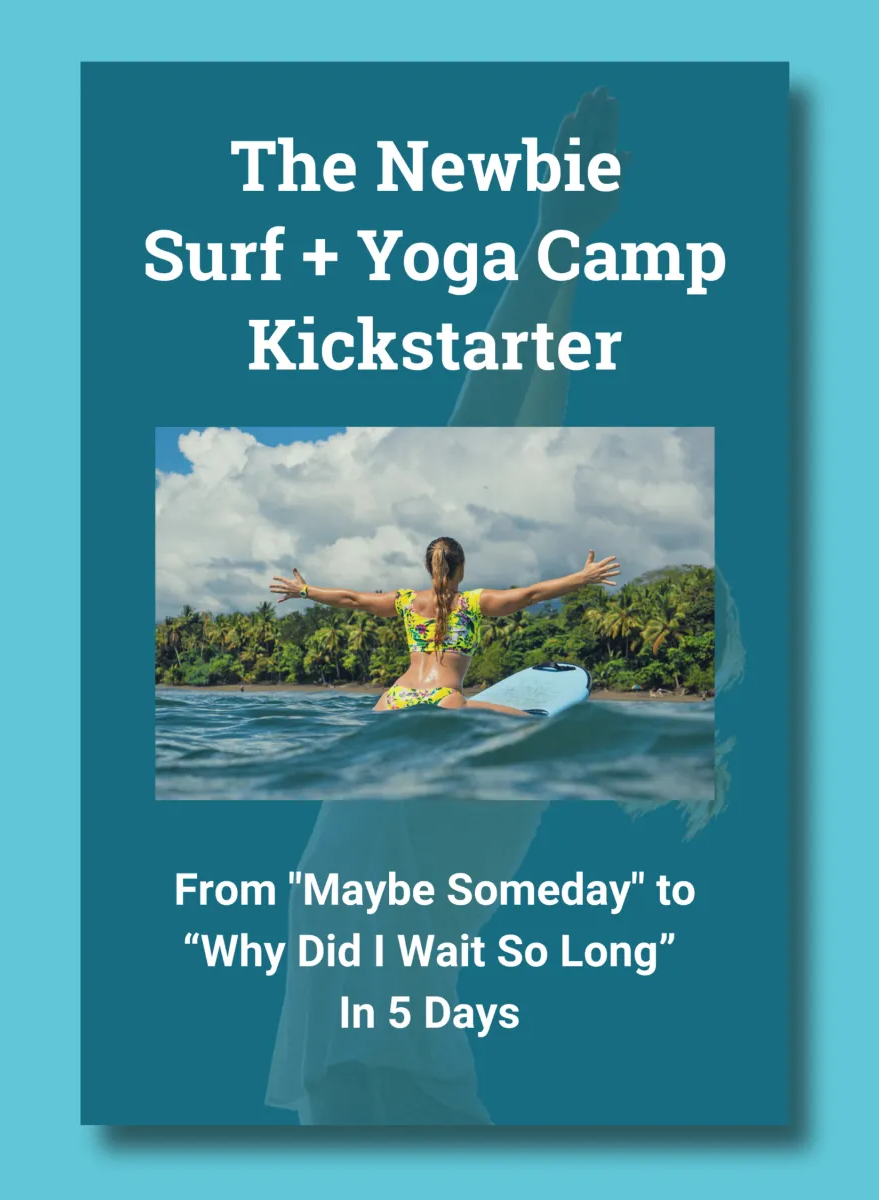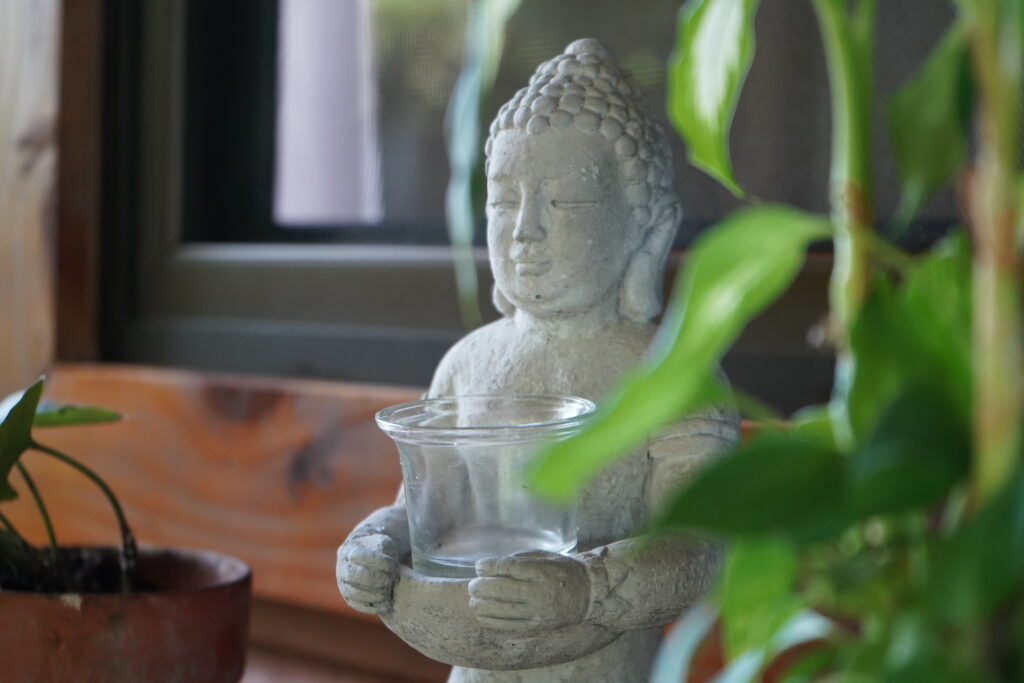The spine is the backbone of our body, both literally and figuratively. It supports our posture, protects the nervous system, and enables daily movements. A flexible spine allows you to move more freely, prevents injuries, reduces back pain, and enhances overall mobility. Spinal flexibility is also an essential component of physical fitness for surfing.
Yoga improves spinal mobility through three poses: backbends, forward folds, and twists. Each of the following poses works to lengthen and strengthen the entire body length, from the ankles up through the backs of the legs and up to the base of the skull, stretching out the cervical spine. This spine elongation reduces back pain and stiffness by stimulating the vertebrae and circulating oxygen-rich blood to the entire spine via gentle torsion.
The following yoga sequence is a great beginner yoga routine for spinal flexibility which includes a variety of poses from standing to balancing, seated poses, and inversions to create a balanced and holistic experience. Connect your breath with each movement and deeply throughout your practice to cultivate mindfulness and stay present.
Remember, yoga is a journey of self-discovery and growth. Embrace the process, be patient with your level, and avoid comparing your progress to others. Spinal flexibility is increased in tiny, and at times, invisible micro-adjustments. Go slow and be kind to yourself! There are numerous benefits to a spinal-health yoga routine, including:

Enhanced Flexibility and Strength: Gentle stretching and strengthening help to release tension, improve joint mobility, and promote a well-balanced musculoskeletal system. It also aids in muscle toning and creating a stronger core, reducing back pain and the risk of injury during other activities. Yoga also improves balance and hand-eye coordination (hello, surfing!).
Better Digestion: By incorporating twists, forward folds, and spinal bends, you can help stimulate the digestive organs and improve overall gut health. Gentle stretching of the internal organs can also help reduce inflammation and increase circulation and blood flow.
Stress Reduction: Turning the focus inwards allows you to disconnect from external stressors, find inner calm, and regulate your breath. The combination of physical movement, breath awareness, and mindfulness helps lower stress hormones and promotes relaxation.
Positive Mood and Emotional Well-being: Yoga releases endorphins, the “feel-good” hormones, which can uplift your mood and foster a positive outlook for the rest of the day.
Healthy Routine and Discipline: Establishing a regular yoga routine helps to cultivate discipline and create healthy habits which can positively affect other areas of your life. Yoga develops a mind-body awareness that serves you long after you’ve left the mat and can have positive repercussions later, such as deciding what to eat.
Deep Breathing and Centering
Before starting your spinal yoga routine, take a few deep breaths to ground yourself. You can do this lying down or in Sukhasana, also known as Easy Pose. Close your eyes, inhale deeply through your nose, and exhale slowly through your mouth. Allow each breath to connect you with the present moment and release any lingering tension or thoughts.
Warm-Up the Spine
Standing Forward Fold (Uttanasana)
Standing Forward Fold allows for gentle spine traction, promoting space between the vertebrae and potentially relieving minor back discomfort. The pose encourages a calming effect on the nervous system, helping to reduce stress, anxiety, and fatigue. The inverted nature of the pose increased circulation along the spine and increased blood flow to the head.

Vinyasa Flow: Chatarunga To Upward Dog
A Vinyasa sequence from High Plank to Chaturanga to Upward Dog typically involves a smooth and fluid transition between the three three yoga poses.
Start in High Plank, keeping your body in a straight line from head to heels. Engage your core and keep your spine neutral. Transition to Chaturanga by shifting your weight forward slightly on your toes as you bend your elbows, lowering your body toward the ground. Keep your elbows close to your ribcage to work the triceps and maintain stability. Stop when your upper arms are parallel to the ground, and your chest is a few inches above the floor.
Transition to Upward Dog (Urdhva Mukha Svanasana) by lowering your hips and thighs to the ground. Inhale as you straighten your arms and lift your chest up and forward. Your thighs and knees should be lifted off the ground, and your arms should be straight with your shoulders directly above your wrists. Your body should form a gentle backbend, with your hips and thighs lifted off the mat. Relax the shoulders away from the ears.
Practicing this flow helps build strength and flexibility in the arms, core, and back while also improving overall body coordination. Remember to modify the poses as needed to suit your experience and physical ability. If you’re new to this sequence, start in supported plank and lower to the ground before transitioning into Cobra Pose or Baby Cobra.

Downward Dog (Adho Mukha Svanasana)
Downward Dog stretches the entire spine, hamstrings, and calves while strengthening the shoulders and arms. The inverted nature of the pose encourages blood flow toward the head, which can improve circulation and provide a refreshing feeling, easing tension in the low back.
The spine’s elongation in this pose can alleviate minor back pain and improve overall spinal alignment. A somewhat more strenuous pose, Downward Dog also strengthens the core, creating an important foundation for good posture.
Standing spinal twists
High lunge with a twist
The twist in this pose helps to increase the flexibility and mobility of the spine, promoting a healthy range of motion. This pose also challenges your balance and stability, improving overall body awareness and coordination. The front leg’s hip flexors are stretched in the High Lunge position, helping to relieve tension in this area, which can be especially beneficial for individuals who sit for extended periods.
Wide-leg forward fold with spinal twist
The wide-legged stance allows for a deep stretch in the hamstrings and inner thighs, which can be especially beneficial for those with tight leg muscles. The twist in this pose targets the hips and shoulders, helping to release tension and increase mobility in these areas. The twisting motion also massages and stimulates the abdominal organs, potentially aiding digestion and promoting gut health.
Backbends
Camel Pose (Ustrasana)
Camel pose stretches the entire front side of the body, and at the same time strengthens the back muscles and core, promoting better posture and reduced back pain. By opening up the chest, Camel Pose also serves to improve deep breathing.

Bridge Pose (Setu Bandhasana)
Bridge Pose targets and tones the muscles of the back, glutes, and thighs, promoting overall lower body strength. The pose also stretches the chest, neck, and spine, enhancing the flexibility of these areas and relieving tension in the upper body which can help improve posture. Finally, bridge pose helps to energize the body and uplift the mood by reducing pressure and increasing circulation in the lumbar region.
Reclined spinal twists
Seated Forward Bend (Paschimottanasana)
This seated pose stretches the entire back and improves flexibility in the spine and hamstrings.
This pose also stimulates the abdominal organs and aids digestion, and at the same time calms the mind and reduces stress and anxiety. With the spine tall you can twist to the right, bringing the left hand to the outside of the right knee, and then do the same on the other side.

Supine Spinal Twist (Supta Matsyendrasana)
A gentle twist that releases tension in the spine and massages the internal organs. This pose is also thought to have a calming effect on the nervous system helping to alleviate stress and anxiety. As a surfer, it stretches the overworked muscles of the shoulders, chest, and neck.
Make it your own
Determine what you want to achieve with your yoga practice and set that as your intention for the day. Whether it’s improving flexibility, reducing stress, building strength, or enhancing mindfulness, clarifying your intentions will guide your practice.
Don’t be afraid to modify poses to suit your level of flexibility and strength. Use props like blocks, straps, and bolsters to make poses more accessible or challenging. Pay attention to your body’s signals during your practice. If a pose doesn’t feel right or causes pain, modify it or skip it altogether.
Remember that yoga is a personal practice, and it’s all about finding what feels right for you. As with all yoga poses, practice with awareness and respect for your body’s limits. If you’d like to deepen your yoga practice consider joining Bodhi’s 7-Day Adult Surf and Yoga Camp.


Your Journey Starts Here
Ready to Finally Experience That Life-Changing Surf + Yoga Trip (Without the Overwhelm)?
Bust the 5 biggest myths about going to a surf and yoga camp so you can stop procrastinating and start catching waves - with our FREE 5-day email course.
Change the heading on the Separator tab ->
Search
Get a Toolkit to Create Calm in Your Inbox
Watch the first lesson from our full immersive course: 8 Limbs of Ashtanga Yoga, FREE!
Change the heading on the Separator tab ->
Most Read Blogs
What is the Meaning of Anjali Mudra?
May 27, 2020
Fitness for Surfers: Workouts, Exercises & Training
February 10, 2022
The Best Places to Eat in Uvita, Costa Rica
May 19, 2022
How to Get From SJO to Costa Ballena, Costa Rica
May 31, 2018
Change the heading on the Separator tab ->
Categories
Categories
- Bodysurfing (5)
- Food (7)
- Responsible Business (6)
- Surfing (65)
- Travel (65)
- Yoga (42)
Change the heading on the Separator tab ->
Newsletter
Thanks for subscribing! Please check your email for further instructions.
Change the heading on the Separator tab ->
Follow Us
Carly Stoenner
Change the heading on the Separator tab ->
Read more
Agni – Ayurveda’s Most Vital and Dynamic Principle
Words by Pilar
What if we told you that you could change your life by reading just one blog post? While that might be a bit far fetched, we’re convinced that we could all benefit…
5 Advanced PNF Stretches for Surfing
Words by Guest Post
Like in any sport, surfing requires exceptional mobility and range of motion in the joints. Stretching is a great tool to gain mobility for those eye-catching maneuvers or a post-session recovery routine….
A Typical Day: Bodhi Sessions 7 Day Surf + Yoga Camp
Words by George Frost
If you’re looking for a surfing and yoga experience that inspires, educates, and empowers – look no further! Our Bodhi Sessions 7 Day Surf + Yoga Camp is designed to help you…



